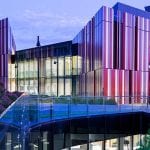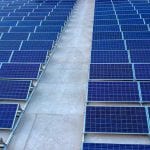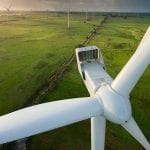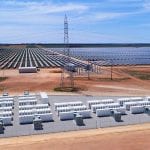Around The Web
The Guardian view on Covid-19 and transport: walk to the future | Editorial
The need for physical distancing means that space in our towns and cities must be shared in new ways
It is clear that the ways we travel, and use transport, will not be the same after the coronavirus outbreak as they were before. What we don’t know is which changes will turn out to have been temporary, and which permanent. Flights from European airports are down by 90% from a year ago, for example. But is this a blip? Reports of strong demand for winter flights suggest it might be.
There are no comparable figures that suggest how many car journeys the UK should expect in six months or a year’s time. But it is to be hoped that the huge reduction in motor traffic caused by the virus will not be completely reversed. Already, cities including Milan and New York have announced ambitious plans to reconfigure roads in such a way as to make more space for cyclists and pedestrians.
Continue reading...EU states, UK dole out another 25 mln more free EUAs for 2020, as glitch slashes max quotas
Climate change ‘greatest threat to humanity’, Australian experts issue call to action
 A collective of eminent Australian experts ranks 10 biggest threats to humanity and puts climate change as the most dangerous.
A collective of eminent Australian experts ranks 10 biggest threats to humanity and puts climate change as the most dangerous.
The post Climate change ‘greatest threat to humanity’, Australian experts issue call to action appeared first on RenewEconomy.
Preliminary study links air pollution to coronavirus deaths in England
Experts say a link is plausible as dirty air is known to harm lungs, but more research is needed
A preliminary study has found the first evidence of a link between higher levels of air pollution and deaths from Covid-19 in England.
The analysis showed London, the Midlands and the north-west had the highest levels of nitrogen oxides and higher numbers of coronavirus deaths.
Continue reading...Climate change: Switch road cash to broadband, adviser says
EU Midday Market Briefing
Coronavirus: WHO developing guidance on wet markets
South Korea to let financials trade in carbon market
ASBN Spotlight: Bushfire Resilience
// Presentation
This talk will reveal the complicated nature of the question on how to create the most bushfire resilient properties both in areas that have historically been at risk, as well as areas we have not previously considered. It will advocate for a whole of community approach to developing resilience, utilising the concept of ‘fire fitness’ to describe measures well beyond clearing a few trees and attempting to utilise materials that are fire-rated in buildings.
Emilis will highlight specific approaches, with several case studies, to be taken by architects and other professionals, as well as home-owners to improve their chances of resilience in bushfire events. Whilst there is no such thing as a bushfire proof home in many areas, there are vast improvements that can be made in how we approach our preparations for the inevitable increasing intensity of these fires.
// Speaker
During bushfires Emilis Prelgauskas steps up to provide logistics support to veterinarians in the South Australian Tier 2 animal triage agency SAVEM. He has deployed to 16 firegrounds in the last decade including post-fire pro bono assistance on Recovery Committees to fire impacted families. In the usual day-to-day Emilis is a 47 year veteran architect also refereed as a Commissioner on the Environment Resources and Development Court of South Australia. He has a portfolio of buildings designed and occupied in fire prone areas, with some destroyed and some surviving bushfire events. He brings his practical, built environment, legal and academic backgrounds to the evolving issues of buildings and bushfire. In October 2019 he presented at the Australian Buildings Bushfire Conference in Leura, NSW.
Depopulation blues: Spain's loneliest people – in pictures
Photographer Joan Alvado’s Last Man on Earth project captured winter in Spain’s Serranía Celtibérica, the most depopulated area of Europe after Lapland. What happens when everyone’s gone?
Continue reading...Macquarie Uni to go 100 per cent renewable in deal with Snowy Hydro
 Macquarie Uni inks a deal with Snowy Hydro to supply its campus with 100% renewables, reducing its emissions footprint by a massive 92 per cent.
Macquarie Uni inks a deal with Snowy Hydro to supply its campus with 100% renewables, reducing its emissions footprint by a massive 92 per cent.
The post Macquarie Uni to go 100 per cent renewable in deal with Snowy Hydro appeared first on RenewEconomy.
Energy Insiders Podcast: Why green hydrogen beats coal hydrogen
 BloombergNEF’s Kobad Bhavnagri on the prospects for a hydrogen economy, and why green hydrogen will easily beat coal hydrogen on costs and emissions.
BloombergNEF’s Kobad Bhavnagri on the prospects for a hydrogen economy, and why green hydrogen will easily beat coal hydrogen on costs and emissions.
The post Energy Insiders Podcast: Why green hydrogen beats coal hydrogen appeared first on RenewEconomy.
Tonga signs more solar/storage projects as it aims for 70 pct renewables
 Infratec and NETcon sign contract to deliver on-grid solar power plants and battery storage systems on the Tongan islands of ‘Eua and Vava’u.
Infratec and NETcon sign contract to deliver on-grid solar power plants and battery storage systems on the Tongan islands of ‘Eua and Vava’u.
The post Tonga signs more solar/storage projects as it aims for 70 pct renewables appeared first on RenewEconomy.
Why Big Oil is paying top dollar to dump its fossil fuel – and what that means for renewables
 For the first time, crude oil prices went negative. Don’t expect to be paid to fill up your car, but it could speed up the shift to low-carbon energy.
For the first time, crude oil prices went negative. Don’t expect to be paid to fill up your car, but it could speed up the shift to low-carbon energy.
The post Why Big Oil is paying top dollar to dump its fossil fuel – and what that means for renewables appeared first on RenewEconomy.
Wind turbine manufacturers brace for Covid-19 fallout
 Vestas set to cut 400 employees at Danish operations as wind turbine manufacturer braces for the Covid-19 economic fallout.
Vestas set to cut 400 employees at Danish operations as wind turbine manufacturer braces for the Covid-19 economic fallout.
The post Wind turbine manufacturers brace for Covid-19 fallout appeared first on RenewEconomy.
Latest 2GW solar auction in India shows prices still falling
 2GW solar energy auction run by the Indian state-owned National Hydroelectric Power Corporation saw tariff bids 4.7% below the 2019 average.
2GW solar energy auction run by the Indian state-owned National Hydroelectric Power Corporation saw tariff bids 4.7% below the 2019 average.
The post Latest 2GW solar auction in India shows prices still falling appeared first on RenewEconomy.
ESB begins push to re-shape markets for a renewables-dominated grid
 Energy Security Board unveils initial wish-list for a new market design that will help transition from centralised, fossil fuel based grid to a distributed and renewables-dominated grid.
Energy Security Board unveils initial wish-list for a new market design that will help transition from centralised, fossil fuel based grid to a distributed and renewables-dominated grid.
The post ESB begins push to re-shape markets for a renewables-dominated grid appeared first on RenewEconomy.
Solar windows a step closer as Australian researchers team with glass manufacturer
 Australian research team says its "game-changing" semi-transparent solar cell technology could be used to transform windows into active power generators.
Australian research team says its "game-changing" semi-transparent solar cell technology could be used to transform windows into active power generators.
The post Solar windows a step closer as Australian researchers team with glass manufacturer appeared first on RenewEconomy.



